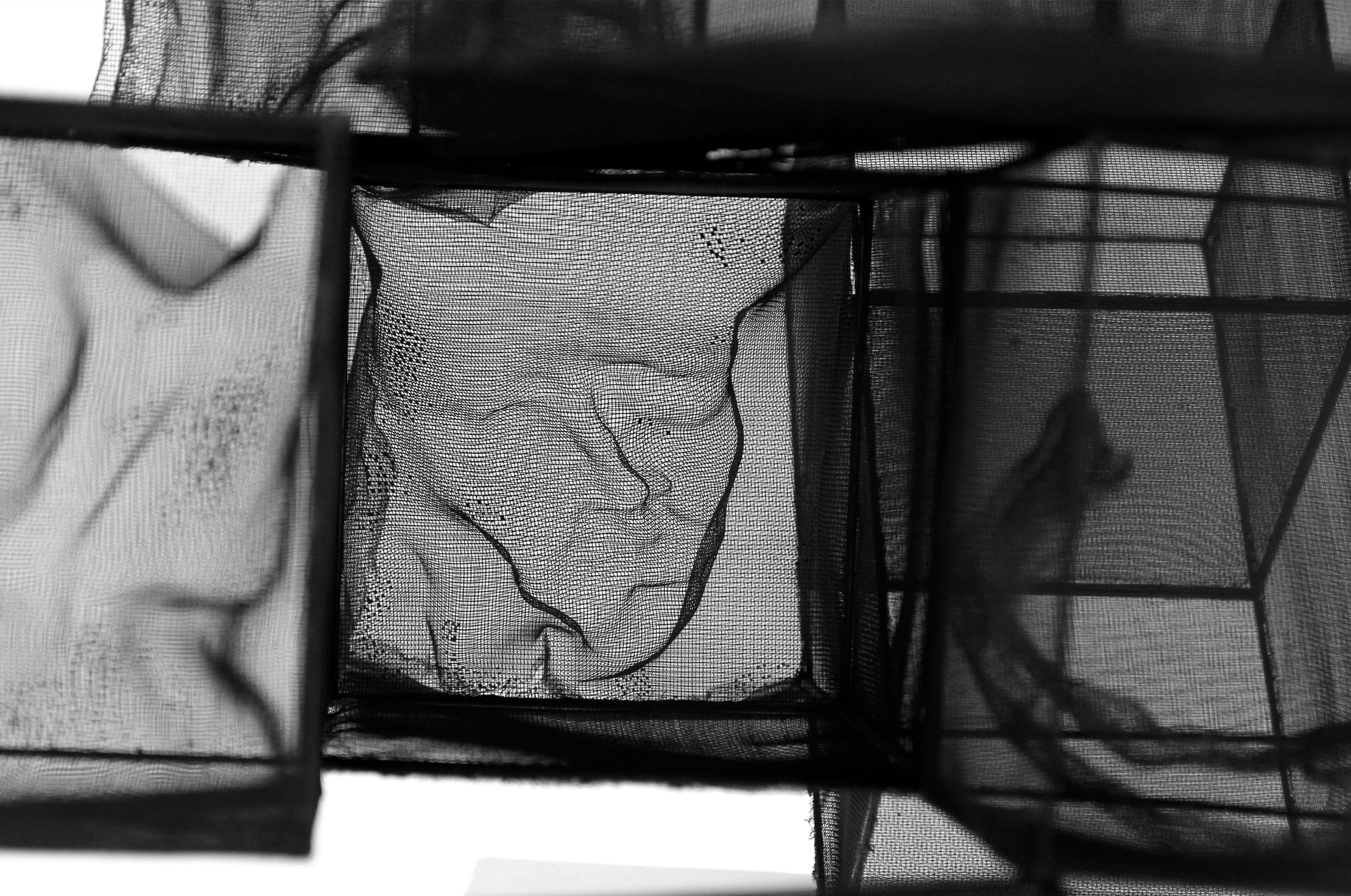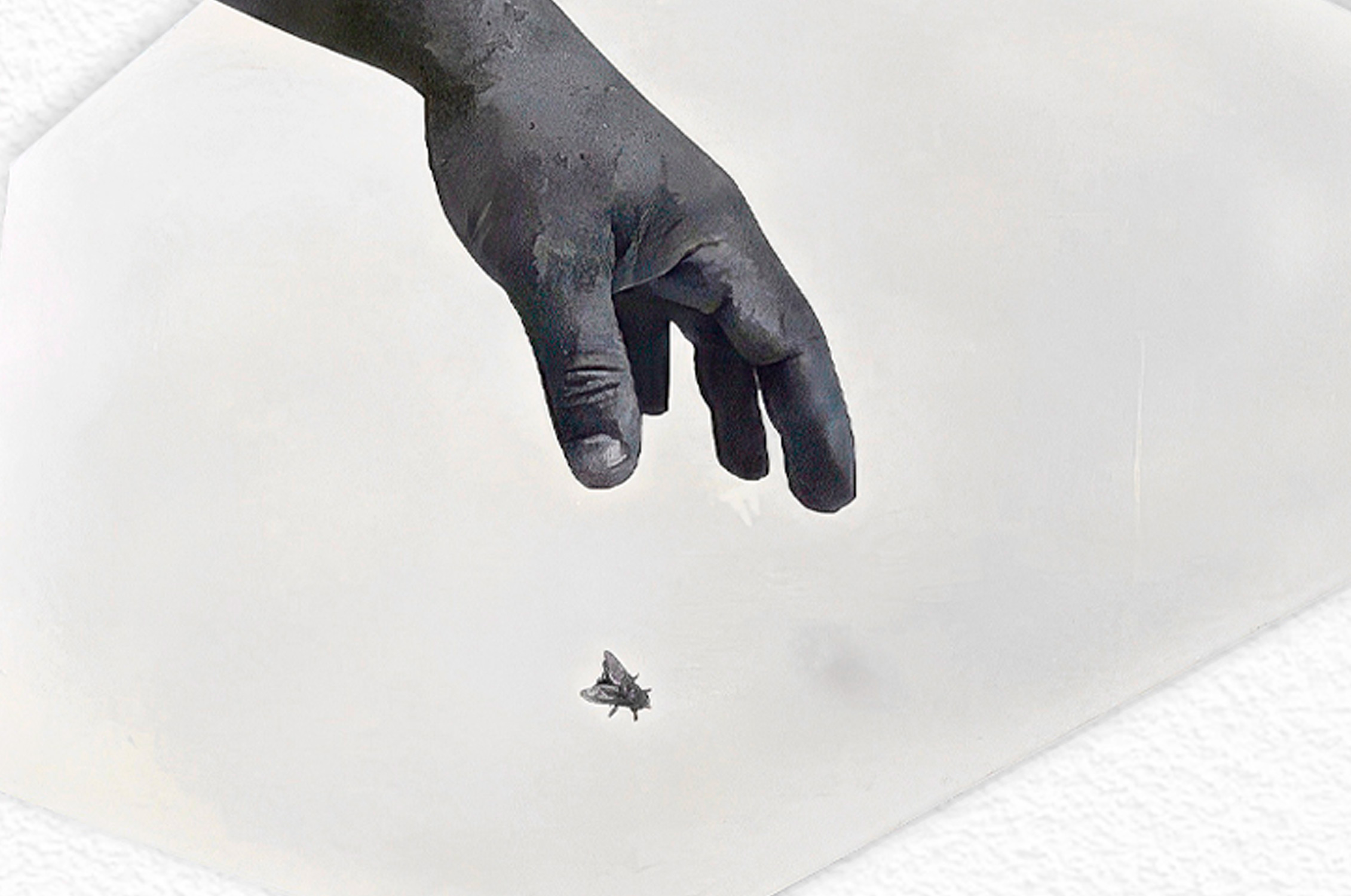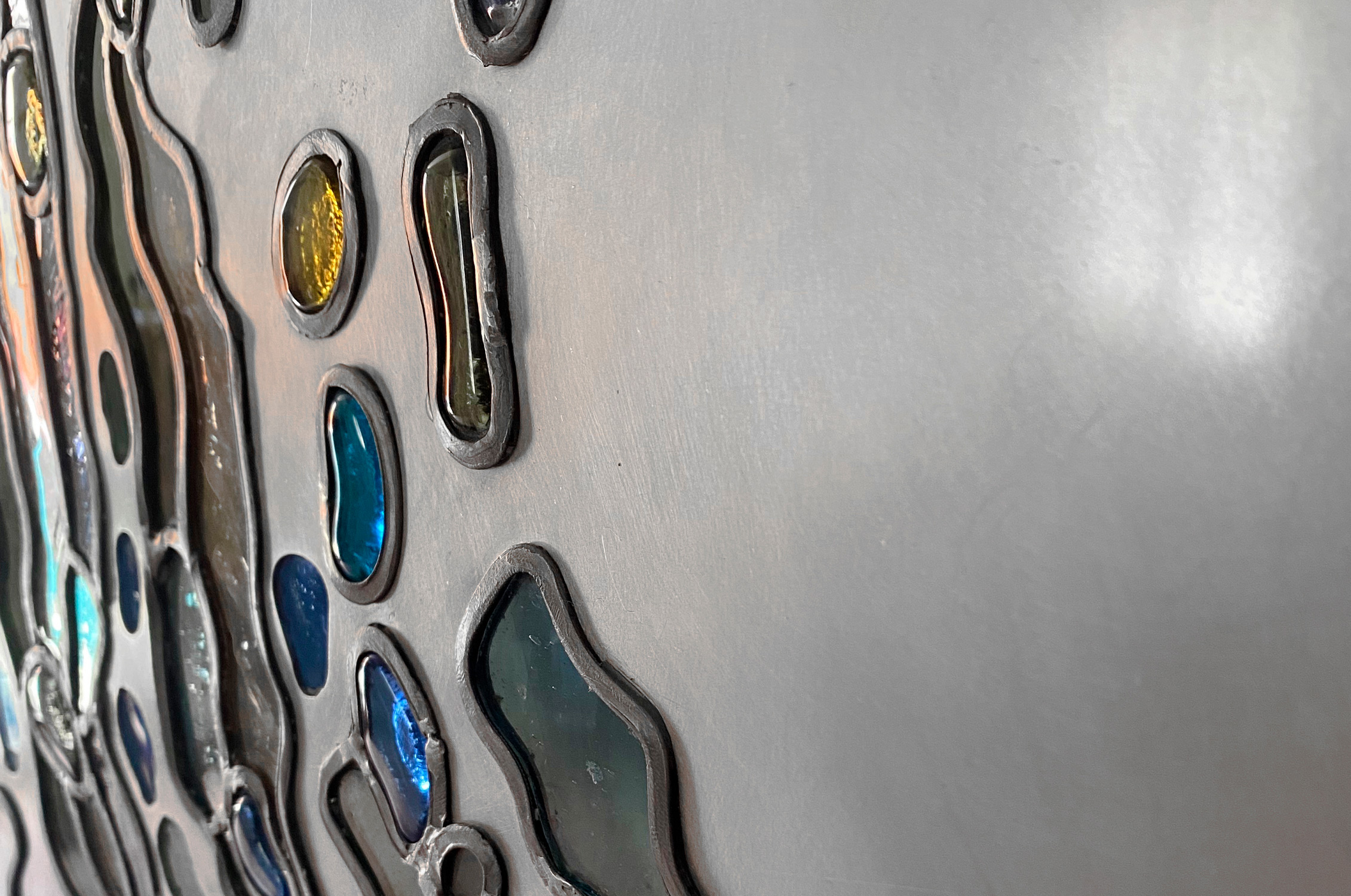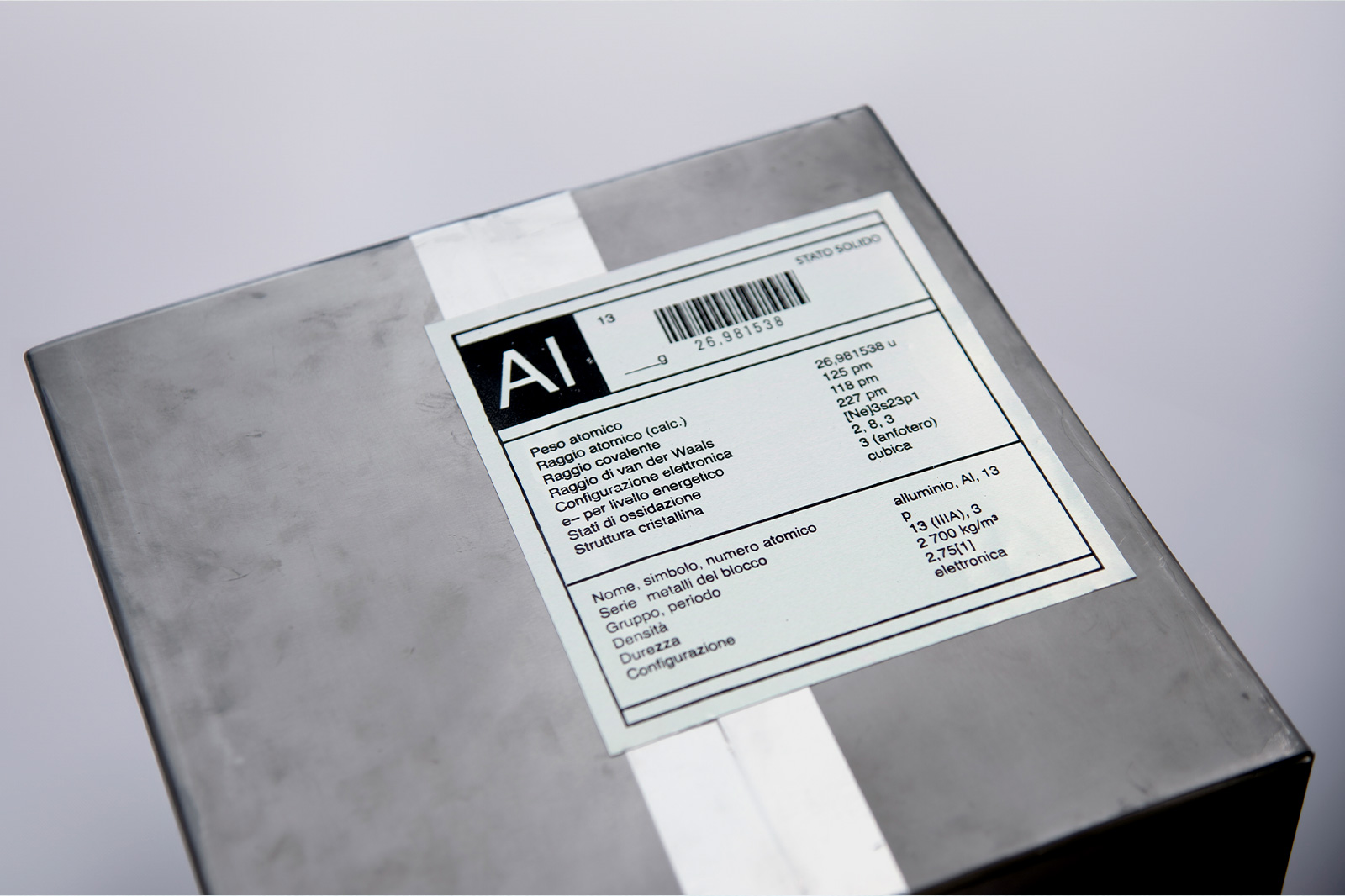WINNER OF THE COMEL AUDIENCE AWARD 2017
Interview to Emilio Alberti
di Rosa Manauzzi
To an artist, the genius loci is an unaware and unavoidable reality that belongs to him and permeates his work.
Why the choice of art? The Liceo Artistico di Brera (Italy) and then the Academy of Art. What are the training experiences that have proved to be fundamental?
Sometimes I get the impression that for me art was the result of a non-choice. When I was a child, I spent whole days in my father’s workshop. He was a carpenter craftsman. I built ‘things’ with processing waste, pieces of wood with strange and evocative shapes that when assembled became fantastic animals or mysterious characters. I am convinced that my first training experience, the fundamental imprinting, took place in my father’s workshop. Observing day after day the raw wood transformation into a perfectly smooth and shiny piece of furniture is a source of great fascination, especially for a child, wonder and amazement derived by the power of hands… my father’s hands, calloused and hard as wood pieces. In that shop I made my first unconscious ‘sculptures’ and since then I have never stopped playing with the materials. Even today for my elderly mother I am the son who has never decided what to do when I grow up.
Mario Radice and Aldo Galli, from the group of artists called Comaschi, are two great masters of Italian abstract art, who paved the way in Italy in the middle of the European avant-garde. Two personalities that you have been able to hang out with and with whom you have worked for some group shows. Can you tell us something about them and tell us how they have influenced your art?
When I was just over 20 years old, I was welcomed by the Association of Fine Arts of Como presided by Mario Radice. Radice and Galli were already two old sacred monsters of Italian abstract art but they proved to be very kind and helpful. I was very impressed by their modesty and affability. I learned a lot from them. Above all the rigor in research, the commitment to art as a daily exercise and the practice of art, even beyond its specific field. I remember that they often cited the cultural heritage of the medieval Magistri Cumacini, who fused art and craftsmanship. Both were also dedicated to applied art, in particular Aldo Galli had worked in the field of wall decoration and stucco. In Como, where at that time the textile industry was flourishing, the artists were asked for ideas and collaborations in the field of textile designs. It is an experience that I was able to practice for a while, then I have also been interested in ceramic techniques and the art object.
In 1976 the international debut at Art 7 in Basel (an event that you will also attend for the later editions). What changes from this moment on?
Participating in major international events leads to greater awareness. One feels part of a global debate. You realize that there is also your voice, albeit weak. You are there too. You become aware that your work can go beyond the narrow areas of your city and the circle of people who know you. The exchange and comparison with other artists are very useful. I have made interesting meetings that sometimes have become friendships or correspondences that have lasted over time. You are certainly more enriched and with many incentives to look for new ways.
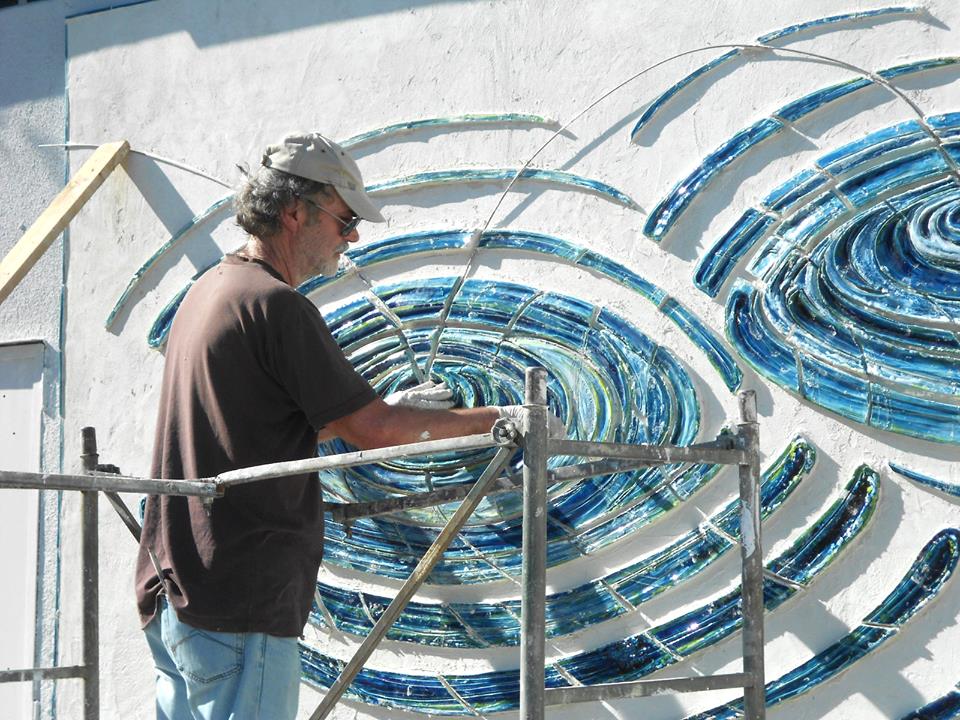
Murale, ceramica. Dongo (2017)
Between the late ’70s and the mid-’80s, marble was the material of choice, thanks to frequent stays in Pietrasanta (Lucca, Italy). Is it the material that calls the artist or the artist who looks for the material to narrate with? What other materials do you like to create with?
Art is language expressed by the hands. Matter and color are the syntax of art. The artist chooses the material best suited to his story as the poet and the writer choose words (it is a topic of frequent discussion with poet friends.) The visual artist has to invent his own language, new words that are only his own). Marble was functional to the research that I then carried forward around the concept of weight and lightness. Sometimes it is the material itself that suggests a story, as if it already contained a memory in itself. Over the years, the curiosity and the desire to experiment led me to deal with the most varied materials: paper, wood, terracotta, bronze, marble, fiberglass, PVC, putty, aluminum. The materials and the technique are not only functional, they provide tools and stimuli to the invention. In this moment, I’ve chosen ceramics to create a large mural, I have returned to an ancient material that always has remarkable expressive potential.
The numerous exhibitions in Germany (1984-1985) and the Italian Contemporary Art exhibition in Kyoto (1989) probably represented the confirmation of an undoubted artistic maturity ready to be recognized beyond the borders, an experience then repeated in the following years also in New York (1991, 1994), in Turkey (2005). What did you get from the other cultures you met and what did you leave of Italy around the world?
raveling, watching and absorbing other cultures is very important for an artist (especially when he is young). The subsequent experiences abroad have confirmed the feelings I had in my first trips to Basel. Art is the universal language, mirror of the times and symbol of a globalized culture, but I have also met many artists who are proud of their culture of origin and this was shown through their works, even if they did not consider themselves expressly committed to representing their values. This I think has happened also to my work. Wherever we go we take our cultural baggage, an ancestral memory that comes from far away. To an artist, the genius loci is an unaware and unavoidable reality that belongs to him and permeates his work. The encounter with distant cultures inevitably leaves suggestions and makes aware of other possible visions of the world and different approaches to reality. And this can only enrich the contents of the work, even if in the final analysis each work expresses above all an inner world, always represents the author… there is always his biography beyond the solicitations of the reality that surrounds it and the way in which the artist feels the world./em>
Winner of the Audience COMEL Award 2017. As a matter of fact, it was a collective acclamation, including the recognition of many young art students visiting the exhibition ‘Sinuosity of Aluminum’, in which your work, Tempesta (Onda), was protagonist along with other twelve works selected from all over Europe. How did you learn about the COMEL Award and what did this experience represent for you?
I learned about the COMEL Prize from an information newsletter about art events. I have participated in very few art competitions because I have never been interested in the competitive aspect. In addition to the theme of aluminum (which I have been using for several years), I was intrigued by the fact that it was a company that organized it, that the prize had its origin outside the usual art circuit. It appeared to me a meritorious act of patronage that expresses a sincere interest in art. It was stimulating to ‘get into the game’ after many years that I had not participated in prizes… and I must say that the result has greatly flattered me.
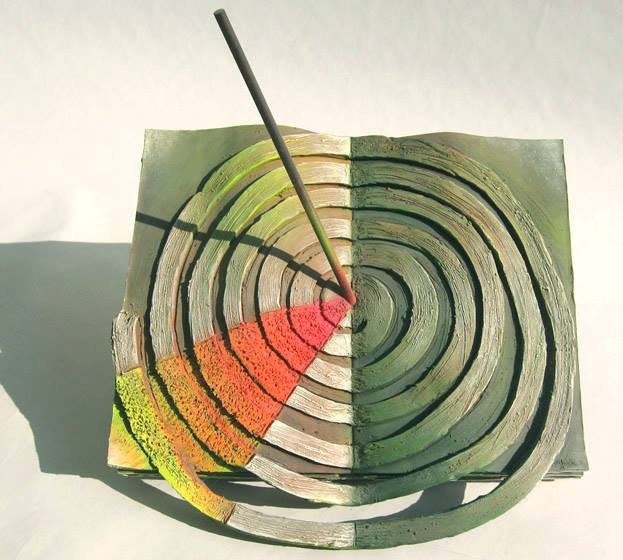
Racconto Vertigine – Terracotta policroma e ottone (1998)
Tempesta (Onda) is definitely a very communicative work on the aesthetic level, able to express energy and at the same time denote balance, almost a storm tamed by the masterly use of color and game of materials. What kind of storm did you have in mind during its execution?
Several visitors have compared my work to the wave of Hokusai (it was perhaps inevitable given the notoriety in recent years of the image of the Japanese master). But I think the only thing the two works have in common is just the fact that both represent a wave! More than the representation of a wave, mine is the idea of a wave. In my storm there is no boat fighting against the waves… maybe the tragedy has already been consumed or perhaps the rowers have managed to save themselves. I wanted to show the dynamism and drama. To freeze the moment. To seize the suspension of a moment where everything can happen or where everything has just happened. The reflection of aluminum helps to make the movement and also places the viewer inside the composition, makes it part of the action.
In an interview, the artist Pietro Consagra affirmed that the warmth of the public was a vital creative push for him, without which he could not continue, unlike some artists who love to create without worrying about their judgment. I have quoted Consagra not without reason, given that the art critic Pierre Restany, has attributed to you, as already been said of the Sicilian Master, the search for ‘free space, deep holes, cracks, all possible openings.’ A similitude, in part but in a decisive manner, that is found in your art. In general, how important is the recognition of the public for you and to what extent is the judgment of the critics relevant? That is, what encourages you the most to create? What is the most important recognition obtained so far?
Meeting the public is essential. The work of art lives in the public’s gaze. ‘It is the spectator who makes the painting’, Duchamp said, ‘it is those who look to set in motion the complex set of signs, traces and signals that make up the work. It is them who make it live’. As also highlighted by Octavio Paz, the work of art exists as it is viewed, interpreted. The same concept is expressed by an ancient Zen story, where a poet kills himself when his greatest listener dies. He was the one who more than any other could rejoice or suffer intensely at his poems, living them and identifying with them. It is the exchange that takes place between the work and those who watch it that makes the difference. The spectator must find something of himself. For all these reasons I am particularly pleased with the COMEL Award of the public!
A great incentive to create is the due date of an exhibition. The finite time, the sense of limitation is a big push to concentrate on the issues to be expressed, to achieve a synthesis eliminating superstructures, redundancies and technical complacency; besides being a goad to overcome that pleasant phase when you think of the work to be carried out, you construct it mentally step by step and you see it already finished without the fatigue and difficulties of realization.
The function of the critic is fundamental for the approach and understanding of the public. Too many times, however, the language is cryptic and abstruse. Frequent visits and exchanges with the critic are very constructive for the artist. The critic must be a roadmate. My first lucky encounter was Pierre Restany. Our talks at the Schubert gallery in Milan at the end of the eighties, where I used to exhibit and he was a regular presence, had great importance for me. Equally important was the attendance in the youth with more mature artists: in addition to the Como abstractionists, I collaborated for a while with the sculptor Francesco Somaini, then Ico Parisi, architect designer who enlightened me with his theory of the integration of the arts, exhorting me to deepen the art as a totalizing experience.
Interdisciplinary collaboration with artists of other art forms is an ever more constant presence in your research. There is also an artistic alliance with the writer, historian and art critic Gérard-Georges Lemaire, in particular for the cycle ‘Finestre’ (among other things, Lemaire is also a well-known translator of English writers and above all one of the greatest connoisseurs of Franz Kafka). But for you it was also important to try different artistic expressions, as in the case of the volume-catalog of stories inspired by the works of the exhibition ‘Incoerente eternità’, curated by Pierre Restany. On this occasion, research on the increasingly preponderant themes of time and light is made explicit. What does it mean?
The moments of meeting, sharing and exchange have always been very important. The comparison with others can only produce growth and openness. It is through relationship and sharing with others that we make sense of our existence.
The all-encompassing experience I was talking about led me to new paths into writing, performance, and music. Particularly significant was the experience with Lemaire who was able to translate our meeting into a literary form, capturing the sense of the ‘Finestre’ I was working at that time. This experience of ours resulted in an exhibition at the Schubert gallery. A few years later, stimulated and encouraged by Pierre Restany, I realized the project ‘Incoerente eternità’, where the cycle of works around the theme of time was compared to short stories I was writing during their creation.
Time is the theme that underlies all of my work, both when it is expressed through an iconography that refers to the measurement of time or whether it refers to it in a more allusive way through light or by representing the motions and the swirls of water.
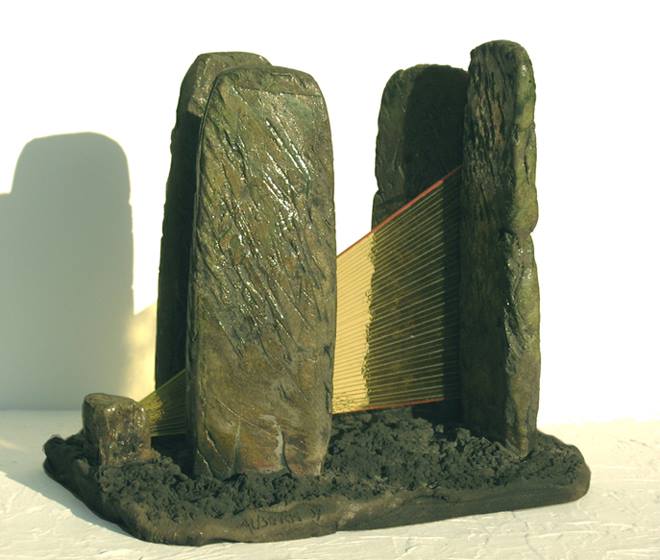
Solstizio – Bozzetto – Ceramica Raku e vetro (1995)
The time, in all its representative fascination, returns to an evocative solo exhibition entitled ‘Le ore del Sole’, held at the Palazzo Millepini of Asiago, in Italy (2012), organized by the National Institute of Astrophysics and the Astronomical Observatory of Padua. You have dedicated several sculptures to the time, with labyrinthic sundials (Racconto: vertigine, 1998) or ancient dolmen from which the mysterious lights of the solstice are born (Solstizio, 1995) or contemporary thresholds that unite the memory to other dimensions that have yet to come (Lampo giallo, 1992, Tempio del Sole, 1994). What is the time? A luminous exploration?
Time is a flow that contains us and permeates our existence. Ours is a finite time. A short path that we are traveling together. Something we all share. An ineffable bond that should unite us in greater awareness.
Time, light, nature and the search for a possible balance between human work and natural context are recurrent themes at the base of many more recent works and exhibitions. The installations L’arco del vento (1994, Porto Sant’Agostino, Como), Dell’acqua e del vento (1994, Porto Sant’Agostino, Como), Perpetuum Mobile (Piazza Cavour, Como, immortalized in the flood of the lake of the 1993), Dafne (villa Parravicini, Como 1994) – with long colored nylon cables that then become travel elsewhere, indicating and representing the light, the prism, the possibility… – to name just a few, are a lively and powerful manifestation.
The relationship between work and space (Fontana’s great lesson) led me first to go beyond the painting and invade the wall, then the gallery itself, which was no longer simply a container, the works not only had to show themselves but to explore the boundaries of the environment that became another space, where the same boundary term did not allude as Heidegger says “to that in which something ends and ends, but to that from which something begins”. The next step was therefore to exit the gallery to consider a larger space, which also involved nature. Great installations in urban space, on the lake’s waters, in the landscape are born.
In 2016 you set up the solo exhibition ‘Acqua’ at the Palazzo ducale in Revere (Mantova, Italy). After all, for years the liquid element has captured your attention (and we metaphorically live in a liquid society). An exhibition with several voices, with poetic and musical interventions, visual art and the environment. From marble to water… It is said that water wins over everything. We just have to revere it, or maybe just go back to consider the natural forces and see our limits.
The concept of Thales the philosopher is very suggestive: ‘Water is the principle of all’. Primordial element, origin of life and symbol of life itself. The attempt to give shape to this idea is the original motivation that has pushed me in this search with friend poets and musicians. Being able to synthesize this feeling of beginning in an image. Wanting to go back to the primordial whirlpools that already contained a promise of life, a vague semblance of future complex organisms. Water is the primordial force from which everything descends, takes shape and evolves. Generating power, powerful, irrepressible, free. It is a symbol of energy that is renewed. I have always found fascination in the ancient initiatory stories of navigations or shipwrecks: Ulysses, Jason, Diomedes and their emblematic and metaphorical relationship with the liquid element. The symbols associated with the theme of water are innumerable. Water as birth. Where you dive for baptism and where, in classical culture, the last journey along the rivers of the underworld takes place. While in the waters of Lethe, river of oblivion, the souls dive to forget the past lives and to reincarnate. Visual representation of the unconscious water contains every deep, seductive, hypnotic image. Perpetual motion, like the flow of thought… or like the flow of time.

